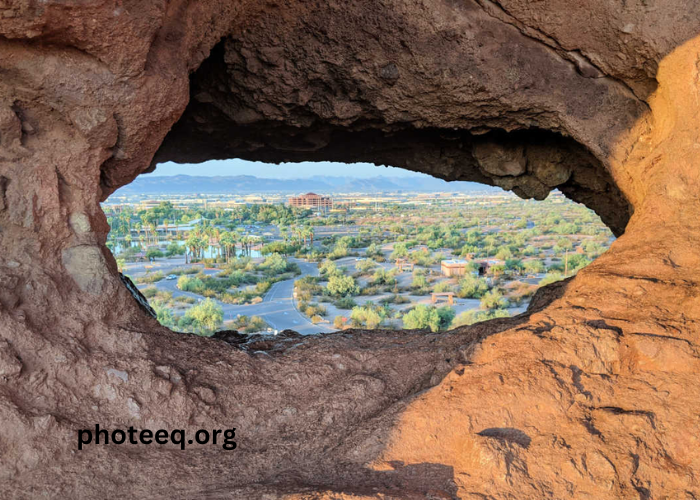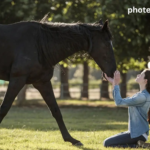The Hole in the Rock is a natural wonder that has captivated the hearts and minds of photographers for generations. This unique geological formation, carved out of the sandstone cliffs of southern Utah, has become a symbol of the region’s rugged beauty and the power of nature. Whether you’re a seasoned landscape photographer or a casual shutterbug, capturing the essence of the Hole in the Rock through your lens can be a truly rewarding experience.
In this comprehensive guide, we’ll explore the art of photographing the Hole in the Rock, from the best times and techniques to the essential gear and post-processing tips. By the end of this article, you’ll be equipped with the knowledge and inspiration to create stunning images that will transport your viewers to this breathtaking natural wonder.
Capturing the Beauty of the Hole in the Rock Through Photography
The Hole in the Rock is a unique and captivating subject for photographers, offering a wide range of creative possibilities. From dramatic sunrises and sunsets to the interplay of light and shadow throughout the day, this natural formation presents a constantly evolving canvas for your artistic expression.
One of the key challenges in photographing the Hole in the Rock is capturing its sheer scale and grandeur. The massive sandstone walls and the dramatic opening that gives the formation its name can be difficult to convey in a two-dimensional image. By carefully framing your shots and considering the placement of foreground and background elements, you can create a sense of depth and perspective that helps to convey the true size and majesty of the Hole in the Rock.
Another important aspect of photographing this natural wonder is the ever-changing light conditions. The Hole in the Rock is particularly responsive to the shifting angles of the sun, with the play of light and shadow creating a constantly evolving visual landscape. By being mindful of the time of day and the weather conditions, you can capture the Hole in the Rock in its most dramatic and compelling forms.
Tips and Techniques for Taking Stunning Photos at the Hole in the Rock
Photographing the Hole in the Rock requires a combination of technical skill, creative vision, and a deep appreciation for the natural world. Here are some tips and techniques to help you capture the beauty of this iconic natural wonder:
- Arrive Early and Stay Late: The best light for photographing the Hole in the Rock is often found during the golden hours of sunrise and sunset. By arriving early and staying late, you’ll be able to capture the dramatic interplay of light and shadow as the sun rises and sets.
- Experiment with Composition: The Hole in the Rock offers a wide range of compositional possibilities, from sweeping panoramic shots to intimate, close-up details. Experiment with different angles, focal lengths, and framing techniques to find the composition that best captures the essence of the scene.
- Use Foreground Elements: Incorporating foreground elements, such as rocks, plants, or even people, can help to add depth and scale to your images, and create a more engaging and dynamic composition.
- Capture the Changing Seasons: The Hole in the Rock takes on a different character throughout the year, with the changing seasons bringing new colors, textures, and lighting conditions. Consider visiting the site during different times of the year to capture the full range of its natural beauty.
- Embrace the Weather: Don’t be afraid to shoot in inclement weather, as the Hole in the Rock can take on a particularly dramatic and moody appearance when shrouded in clouds or mist.
- Utilize Long Exposures: Longer shutter speeds can be used to create a sense of movement and fluidity in your images, such as capturing the flow of water or the trails of clouds.
- Experiment with Different Focal Lengths: From wide-angle lenses that capture the full grandeur of the Hole in the Rock to telephoto lenses that isolate specific details, experimenting with different focal lengths can help you create a diverse portfolio of images.
Best Time of Day and Year for Photographing the Hole in the Rock
The Hole in the Rock is a subject that is highly responsive to the changing light conditions throughout the day and the shifting seasons. To ensure that you capture the formation at its most dramatic and visually compelling, it’s important to time your visits carefully.
Morning and Evening Light: The golden hours of sunrise and sunset are often considered the best times of day for photographing the Hole in the Rock. During these periods, the low-angled light creates a warm, rich glow that accentuates the texture and color of the sandstone walls. The interplay of light and shadow can also produce a sense of depth and drama that is often lacking in midday shots.
Midday Lighting: While the midday sun can be harsh and create unflattering shadows, it can also reveal certain details and textures within the Hole in the Rock that may be obscured during the softer, warmer light of the golden hours. By experimenting with different angles and compositions, you may be able to capture striking, high-contrast images that showcase the sheer scale and power of the formation.
Seasonal Variations: The Hole in the Rock takes on a different character throughout the year, with each season bringing its own unique visual appeal. Spring and fall, for example, often offer the most vibrant colors, as the surrounding vegetation comes to life or transitions to autumn hues. Winter, on the other hand, can create a more stark and dramatic backdrop, with the possibility of snow or ice adding an extra layer of visual interest.
By carefully considering the time of day and the time of year, you can optimize your chances of capturing the Hole in the Rock at its most visually compelling.
Composition and Framing for Hole in the Rock Photos
Effective composition is essential when photographing the Hole in the Rock, as this natural wonder presents a wide range of creative possibilities. Here are some tips to help you craft compelling, visually striking images:
- Rule of Thirds: The classic rule of thirds can be a powerful tool for composing your Hole in the Rock photos. By placing the opening of the formation or other key elements along the intersecting lines of the rule of thirds grid, you can create a more balanced and visually engaging image.
- Leading Lines: The dramatic, sweeping lines of the Hole in the Rock’s sandstone walls can be used as powerful leading lines to draw the viewer’s eye into the frame and towards the focal point of the image.
- Framing: Consider using the natural frame of the Hole in the Rock’s opening to create a sense of depth and perspective in your images. This technique can be particularly effective when combined with a foreground element, such as a rock or plant, to add an extra layer of visual interest.
- Symmetry and Asymmetry: The Hole in the Rock’s symmetrical shape can be a powerful compositional tool, allowing you to create visually striking, balanced images. Alternatively, you can play with asymmetry to create a more dynamic and visually engaging composition.
- Scale and Perspective: Incorporating elements that convey the sheer scale of the Hole in the Rock, such as people or objects of known size, can help to create a sense of perspective and depth in your images.
- Negative Space: Leaving ample negative space around the Hole in the Rock can help to emphasize its grandeur and draw the viewer’s eye towards the focal point of the image.
Equipment and Gear for Photographing the Hole in the Rock
Photographing the Hole in the Rock requires a versatile and well-equipped camera kit. While the specific gear you’ll need will depend on your personal preferences and shooting style, here are some essential items to consider:
- Camera Body: A high-quality DSLR or mirrorless camera with good low-light performance and a wide dynamic range will be essential for capturing the dramatic lighting conditions at the Hole in the Rock.
- Lenses: A range of focal lengths, from wide-angle to telephoto, will allow you to capture the full grandeur of the formation as well as isolate specific details. Consider packing a wide-angle lens (16-35mm), a standard zoom lens (24-70mm), and a telephoto lens (70-200mm or longer).
- Tripod: A sturdy tripod is a must-have for capturing long exposures, low-light shots, and ensuring sharp, blur-free images.
- Filters: Neutral density (ND) filters can be particularly useful for creating long exposures that capture the flow of water or the trails of clouds. Polarizing filters can also help to reduce glare and enhance the color and contrast of your images.
- Lighting Gear: While the natural lighting at the Hole in the Rock is often the star of the show, having a portable flash or reflector on hand can be helpful for filling in shadows or adding a touch of directional light to your compositions.
- Weatherproofing: Given the often unpredictable weather conditions at the Hole in the Rock, it’s a good idea to have weatherproofing gear, such as rain covers for your camera and lens, to protect your equipment.
- Backup Gear: Bring extra batteries, memory cards, and even a backup camera body or lens, just in case.
By assembling a well-rounded kit of camera gear, you’ll be able to capture the full range of the Hole in the Rock’s natural beauty and create a diverse portfolio of stunning images.
Post-Processing and Editing Tips for Hole in the Rock Photos
Once you’ve captured your images of the Hole in the Rock, the next step is to bring them to life through post-processing and editing. Here are some tips and techniques to help you get the most out of your photos:
- RAW Workflow: Shooting in RAW format will give you the maximum amount of flexibility and control during the editing process, allowing you to fine-tune exposure, color, and other key parameters.
- Adjust Exposure and Contrast: The Hole in the Rock can present a wide range of lighting conditions, from bright, high-contrast scenes to more subdued, low-light environments. Use your editing software’s exposure and contrast tools to bring out the best in your images, ensuring that the highlights and shadows are balanced and the overall tone is visually striking.
- Enhance Color and Saturation: The rich, warm tones of the Hole in the Rock’s sandstone walls can be further emphasized through careful color and saturation adjustments. Be careful not to over-saturate, as this can result in an unnatural, over-processed look.
- Sharpen and Clarity: Use sharpening and clarity tools to bring out the fine details and textures in your Hole in the Rock photos, ensuring that your images have a crisp, professional-looking finish.
- Dodge and Burn: Selectively lightening and darkening specific areas of your image can help to draw the viewer’s eye to the most important elements of the composition, creating a sense of depth and focus.
- Lens Correction: If your images exhibit distortion or vignetting due to the wide-angle lenses often used for Hole in the Rock photography, use your editing software’s lens correction tools to fix these issues.
- Crop and Recompose: Don’t be afraid to crop and recompose your images during the editing process, as this can help to refine the composition and emphasize the most compelling elements of the scene.
- Black and White Conversion: The Hole in the Rock can make for striking black and white images, particularly when the focus is on the texture and drama of the sandstone walls. Experiment with different conversion techniques to find the look that best suits your vision.
Conclusion
Photographing the Hole in the Rock is a truly rewarding and inspiring experience, one that allows you to capture the raw power and beauty of the natural world. By applying the tips and techniques outlined in this guide, you’ll be well on your way to creating stunning, professional-quality images that will captivate and inspire your viewers.
Remember, the key to capturing the essence of the Hole in the Rock is to approach it with an open mind, a keen eye for composition, and a deep appreciation for the ever-changing light and weather conditions. With patience, persistence, and a willingness to experiment, you’ll be able to create a diverse portfolio of images that showcase the full range of this natural wonder’s visual splendor.
So, what are you waiting for? Grab your camera gear, head out to the Hole in the Rock, and start capturing the beauty of this iconic natural formation. Who knows, you might just end up with the shot of a lifetime.
Ready to take your Hole in the Rock photography to the next level? Book a guided photography tour with our experienced local experts and let them share their insider tips and techniques for capturing the perfect shot. Click here to learn more and plan your adventure today.





